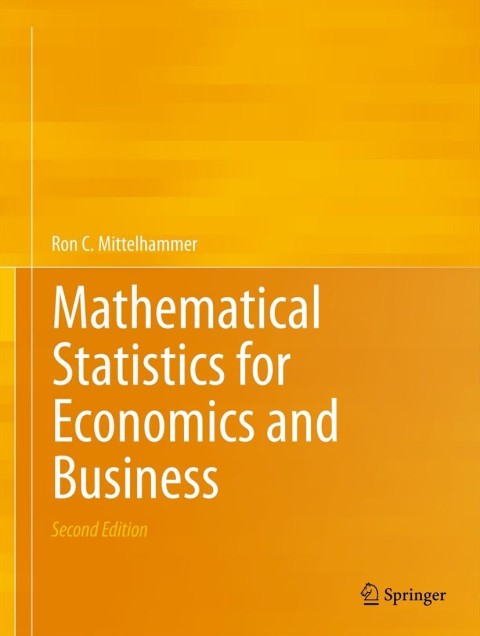The Nevada Gaming Commission has been directed to check the fairness of a roulette wheel used by
Question:
The Nevada Gaming Commission has been directed to check the fairness of a roulette wheel used by the WINBIG Casino. In particular, a complaint was lodged stating that a "red" slot occurs more frequently than a "black" slot for the roulette wheel used by WINBIG, whereas red and black should occur with probability .5 if the wheel is fair. The wheel is spun 100,000 times, and the number of red and black outcomes were recorded. The outcomes can be viewed as iid from some Bernoulli population distribution: \(X \sim p^{X}(1-p)^{1-X} I_{\{0,1\}}(x)\) for \(p \in(0,1)\). It was found that \(\sum_{i=1}^{n} x_{i}=49,873\), where \(x_{i}=1\) indicates that the \(i\) th spin resulted in a red outcome.
(a) Use \(\bar{X}_{n}\) to provide an estimate of \(p\), the probability of observing a red outcome.
(b) Define an asymptotic distribution for \(\bar{X}_{n}\).
(c) Using the outcome of \(\bar{X}_{n}\) mean as an estimate of \(p\) in the asymptotic distribution for \(\bar{X}_{n}\), how probable is it that an outcome of \(\bar{X}_{n}\) is within \(\pm .005\) of the true probability? Use Chebyshev's inequality to argue that the estimate \(\bar{X}_{n}\) for \(p\) should be very accurate in the sense that outcomes of \(\bar{X}_{n}\) are very close to \(p\) with high probability.
(d) Use the Van Beeck's inequality to provide an upper bound to the approximation error that can occur in assigning probability to events like \(P\left(\bar{X}_{n} \leq cight)\) using the asymptotic distribution for \(\bar{X}_{n}\). Your bound will unfortunately depend on the unknown value of \(p\). Estimate a value for the bound using your outcome of \(\bar{X}_{n}\) as an estimate of \(p\).
(e) Define an asymptotic distribution for \(g\left(\bar{X}_{n}ight)=\bar{X}_{n}(1-\) \(\left.\bar{X}_{n}ight)\).
(f) Compare the asymptotic distribution of the estimator in part
(e) to the asymptotic distribution of the estimator \(S^{2}=\sum_{i-1}^{n}\left(X_{i}-\bar{X}_{n}ight)^{2} /(n-1)\). If the sample size were large, would you prefer one of the estimators of \(p(1-p)\) over the other? Explain?
Step by Step Answer:

Mathematical Statistics For Economics And Business
ISBN: 9781461450221
2nd Edition
Authors: Ron C.Mittelhammer





